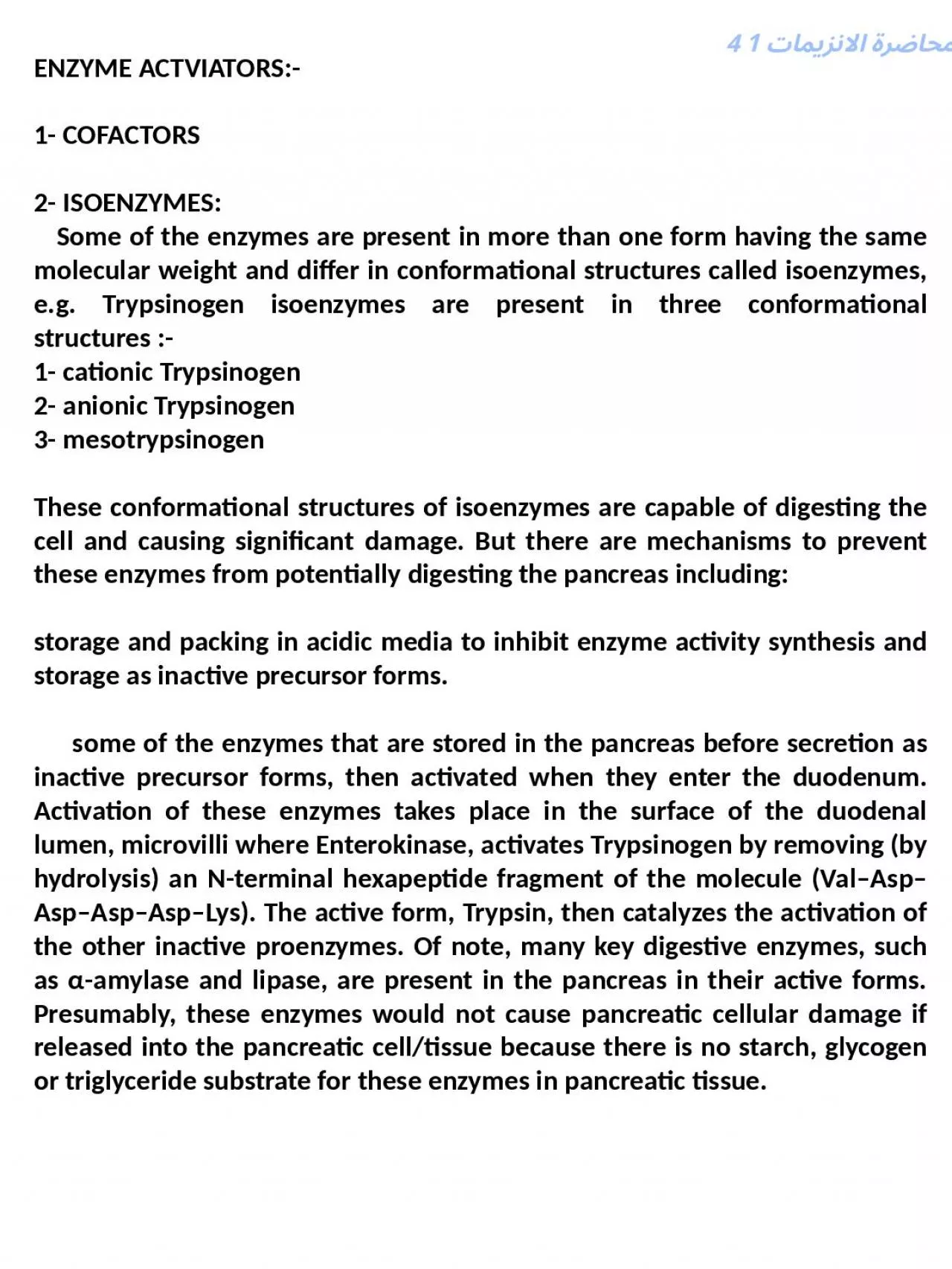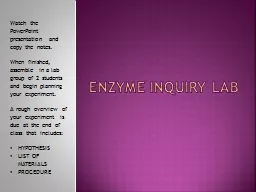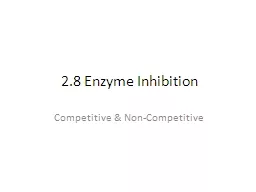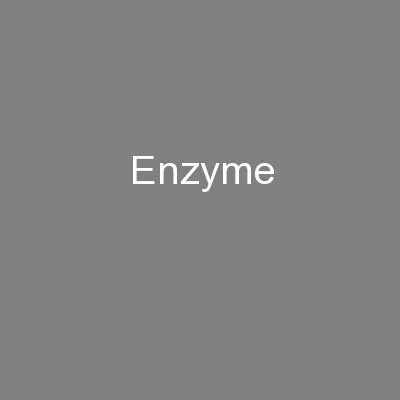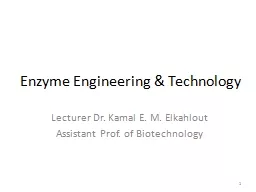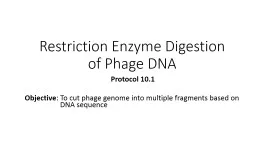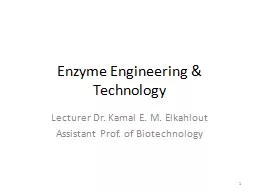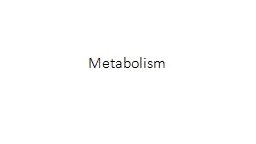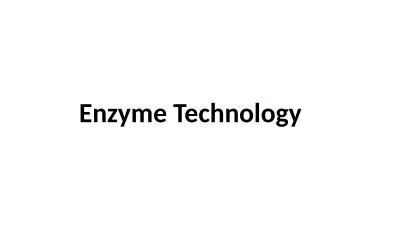PPT-ENZYME ACTVIATORS:- 1- COFACTORS
Author : caroline | Published Date : 2022-06-20
2 ISOENZYMES Some of the enzymes are present in more than one form having the same molecular weight and differ in conformational structures called isoenzymes eg
Presentation Embed Code
Download Presentation
Download Presentation The PPT/PDF document "ENZYME ACTVIATORS:- 1- COFACTORS" is the property of its rightful owner. Permission is granted to download and print the materials on this website for personal, non-commercial use only, and to display it on your personal computer provided you do not modify the materials and that you retain all copyright notices contained in the materials. By downloading content from our website, you accept the terms of this agreement.
ENZYME ACTVIATORS:- 1- COFACTORS: Transcript
Download Rules Of Document
"ENZYME ACTVIATORS:- 1- COFACTORS"The content belongs to its owner. You may download and print it for personal use, without modification, and keep all copyright notices. By downloading, you agree to these terms.
Related Documents

